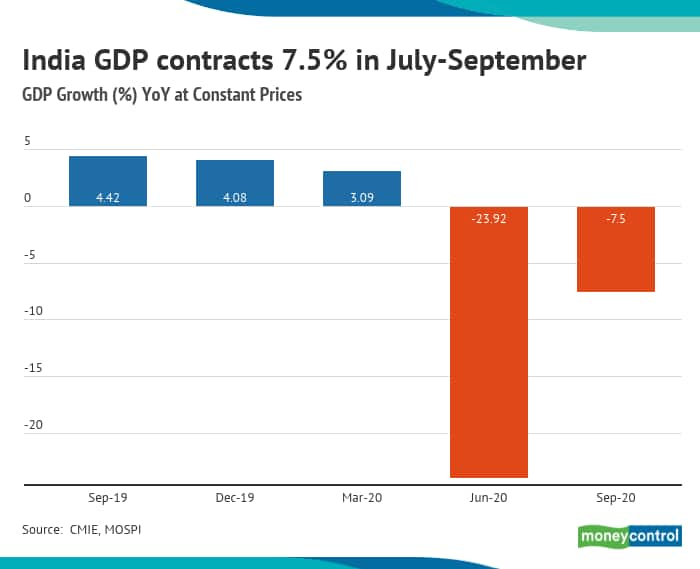


The Indian economy has officially entered a technical recession, with two consecutive quarters of negative growth in gross domestic product (GDP).
Real GDP for the September quarter contracted 7.5 per cent year-on-year, on the back of the steep contraction in manufacturing, construction, and services, data released by the National Statistical Office showed on November 27.
The pace of contraction was slower than analyst estimates. Analysts polled by news agencies Reuters and Bloomberg had expected a contraction of 8.8 per cent and 8.2 per cent, respectively, for the second quarter.
However, the data also showed that the country has begun its gradual recovery following the nationwide lockdown in April, May, and June which had flatlined the economy.
The real GDP for April-June 2020 had contracted 23.9 per cent, the steepest fall ever (and the first contraction in 40 years). The July-September 2019 quarter had witnessed a GDP growth of 4.4 per cent.
This means that sequentially, India’s GDP grew by 23 per cent in the July-September quarter.

Once again, the agriculture sector was the main driver of the economy. Agriculture grew 3.4 per cent year on year, the same as in the first quarter of the current fiscal year.
Electricity, water, gas and other utility services also rose 4.4 per cent after contracting by 7 per cent in April-June.
As a percentage of GDP, government final consumption expenditure contributed 10.9 per cent, lower than 18.1 per cent in April-June and 13 per cent in July-September last year, while private final consumption expenditure was 54.2 per cent of GDP, compared with 56.5 per cent in the same period last year.
Gross fixed capital formation was 29 per cent, almost the same as July-September last year.
Discover the latest Business News, Sensex, and Nifty updates. Obtain Personal Finance insights, tax queries, and expert opinions on Moneycontrol or download the Moneycontrol App to stay updated!